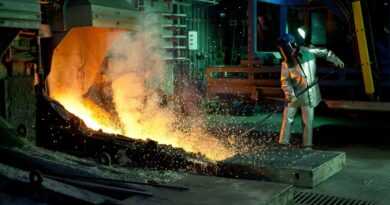Paving the way for the future of the blast furnace
The ironmaking industry has long been a vital sector in the global economy. Blast furnaces, in particular, have been a cornerstone of the steel industry for centuries, providing a vital source of raw materials for the production of steel. However, with the increasing demand for sustainability and efficiency, the industry has been facing pressure to evolve and innovate. One company that has been leading the way in this regard is Paul Wurth, a Luxembourg-based engineering company and subsidiary of SMS group.
Paul Wurth has been making significant strides in the field of data science and automation, particularly in the area of blast furnace operation. The company has recognized the importance of machine learning in improving the operational efficiency and sustainability of blast furnaces. Machine learning, a subset of artificial intelligence, involves the use of algorithms and statistical models to analyze and interpret data, and then to make predictions or decisions based on that information.
Machine learning is revolutionizing the metals industry
The importance of machine learning for the ironmaking industry cannot be overstated. Operating a blast furnace is a complex procedure involving multiple variables that need to be controlled and optimized for maximum efficiency. Machine learning algorithms can help identify patterns and trends in a large number of status signals in order to optimize the process, reduce waste, and improve performance. Furthermore, machine learning can be used to predict potential issues and take proactive measures to prevent them from occurring.
Innovation and research are essential for companies looking to stay ahead of the curve. The ironmaking industry is no exception. Companies that invest in research and development can identify new opportunities and technologies that can help them stay competitive in a rapidly evolving market. Additionally, innovation can lead to the development of new products and services that can provide new revenue streams for the company.
Combining time series data to create a digital twin
This research is co-hosted by the ‘Augmented Vision’ research group at DFKI. They are investigating methods to combine time series data from multiple blast furnaces. The goal is to train more generic machine learning models and pave the way to creating a digital twin. With this research, it will be possible to virtually transfer equipment from one furnace to another, create a large dataset from multiple blast furnaces, and generate artificial data, enabling a multitude of new products to be developed and prioritized according to market needs. The title of his project is “Development and Evaluation of Deep Domain Mapping Solutions for Multivariate Time Series Applied to the Ironmaking Industry”.
Enhancing blast furnace thermal control with recommendation models
This research focuses on developing recommendation models to improve thermal control of the blast furnace, which is currently implemented using predictions of the hot metal temperature and a set of rules defined by experts. It aimed to use a combination of historical data and a simulation model to improve the recommendation and attain more complex objectives, such as stabilizing the temperature or minimizing CO2 emissions or fuel. This research is paving the way towards an autonomous blast furnace. His research project is titled “Development and Evaluation of a Reinforcement Learning Model as an Enabler for Autonomous Blast Furnace.”
The research has the potential to revolutionize the way many industries operate, leading to significant cost savings, improved performance, and reduced environmental impact. Moreover, the techniques and methods developed in the research can be applied to a wide range of industries and processes, leading to more efficient and optimized operations. The research is answering multiple research questions, that could be summarize as follow:
- How to combine data (reality through sensor) and simulation model (internal state simulated but there are hypothesis)
- How to combine data from similar but different industrial asset
- How data and simulation model can be employed to create a digital twin
- What are the requirements to go in the direction of autonomous furnaces




